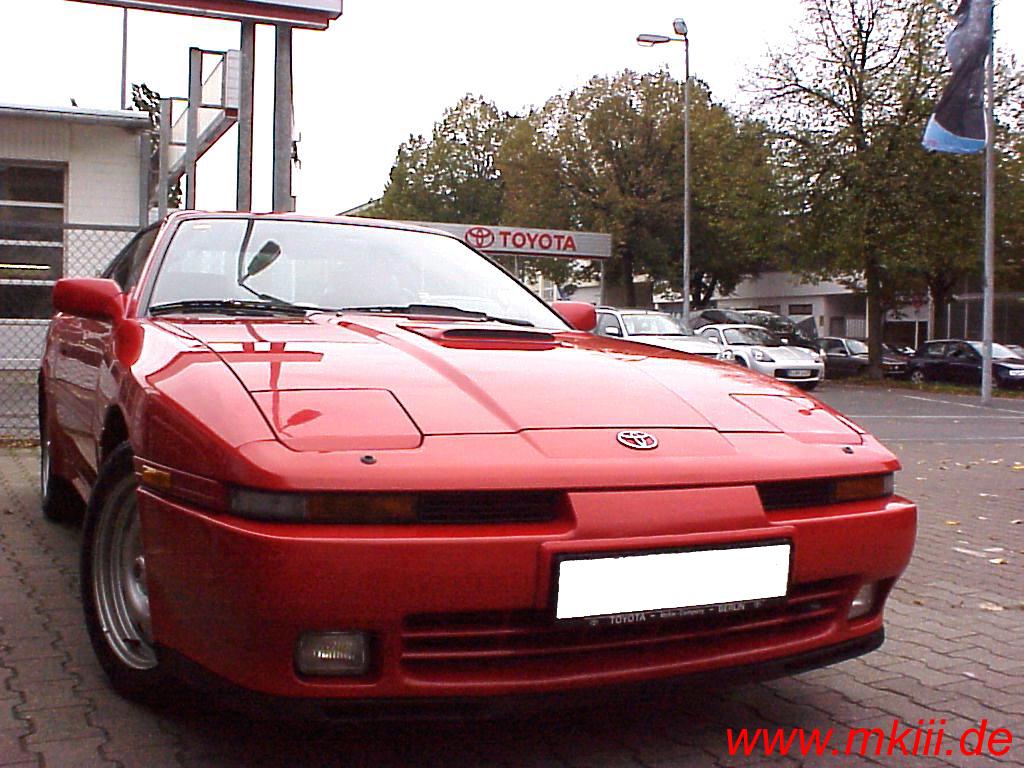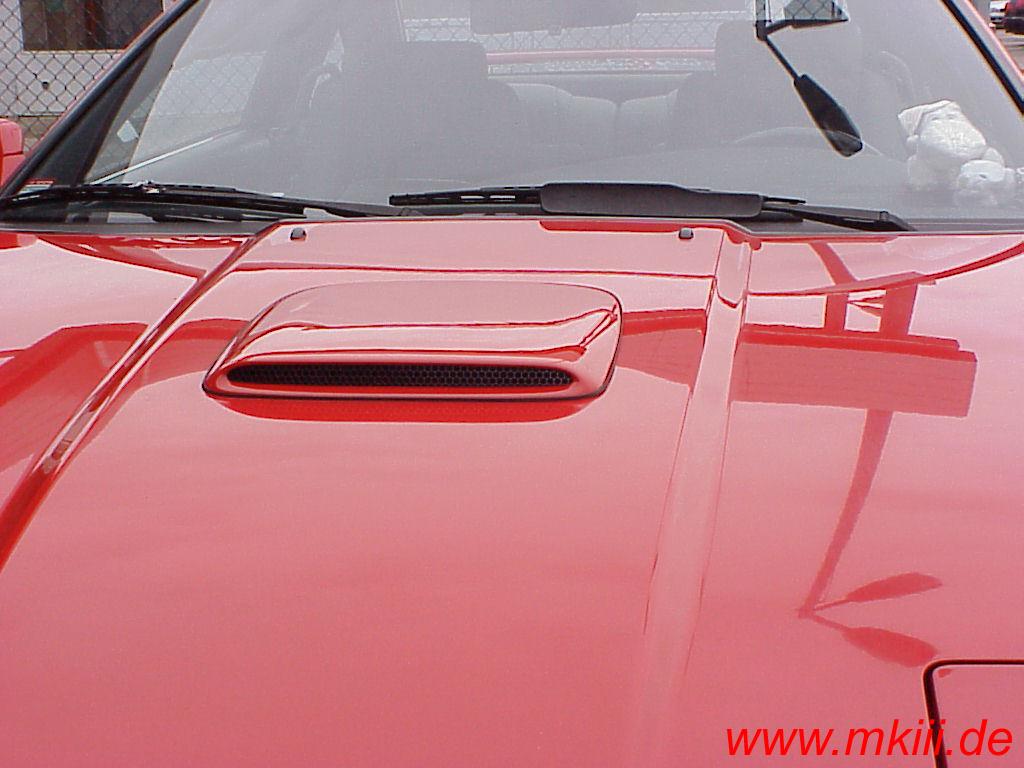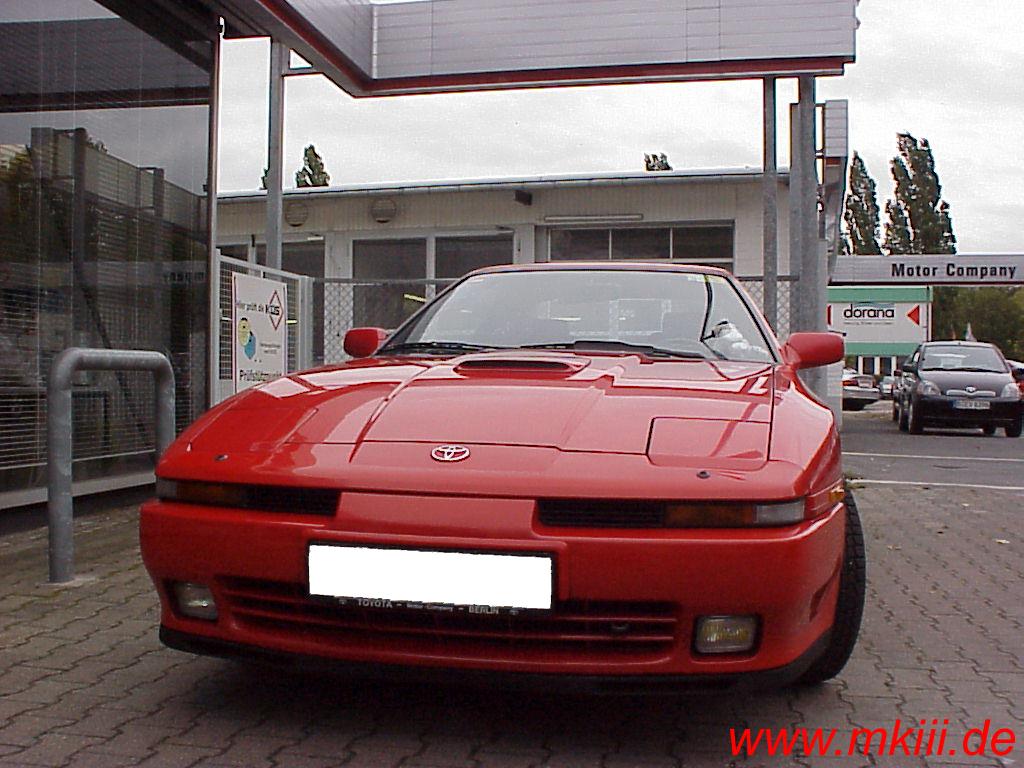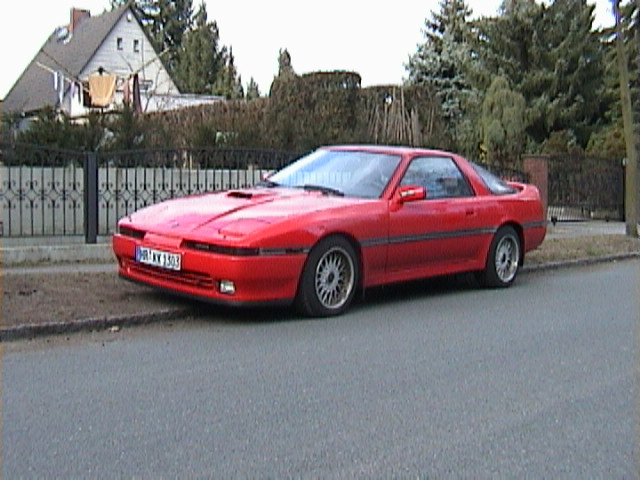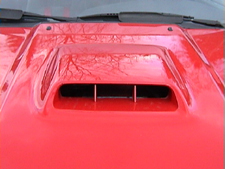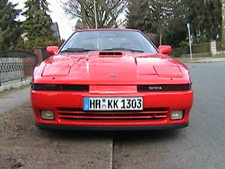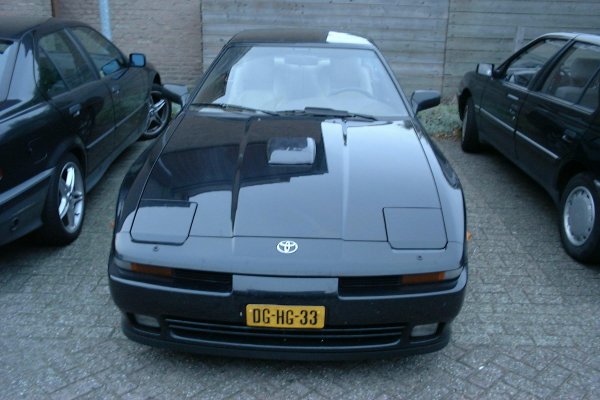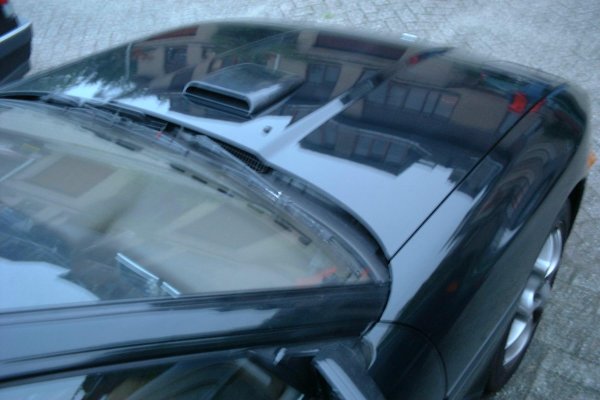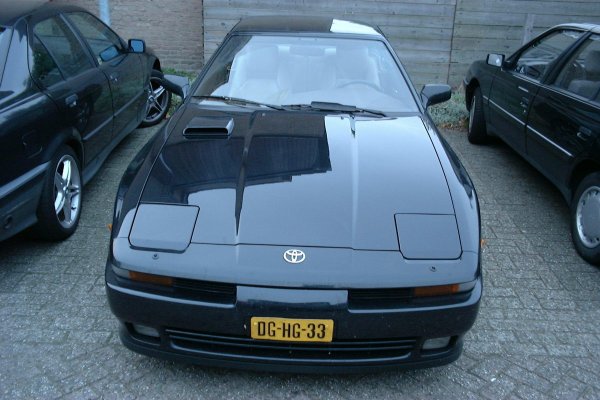The Supra MKIV has it as standard - an air scoop! Through a control system wind is blown to the 3rd and 4th cylinder and this additionally cooled.
Supra MK4 with standard air scoop Toyota has solved here so one of the biggest problems of the previous model, which is known in the insufficient cooling of the engine and the associated cylinder head problems. If you take a closer look at the engine compartment, the source of the error becomes quickly apparent: while the front part of the engine block is still sufficiently supplied with outside air through the openings in the front apron and beside the turn signals, it has no chance of reaching the rear regions of the power plant. The result: while the first cylinders can cool down quickly at number 5 and 6 (where the turbo sits as well) the heat can only escape badly - the aluminum head warps and leaks!
Although Toyota has already done a lot to increase the air intake area with the widebody of the models from 90, a "Blown Head Gasket" (BHG) is also common in these years of construction.
After the FAQ article "Cooling System" has already shown some possibilities for optimization, we now want to take a slightly more drastic route - more cold or faster removal of the warm air at the decisive points.
A good and completely free alternative to piercing the bonnet is simply to open the hood after driving or at least slightly lift, so that the warm air can escape faster and more evenly. The disadvantage is obvious; Who likes to leave their car with the engine compartment open when it's not in their own garage?
It must therefore be provided differently for more circulation - an electric fan, which also runs after the car, is certainly a good investment. The problem here is again that the air can not penetrate through the built-up aggregate jungle into the farthest regions and there are no improved exit routes.
As an absolute insider tip among supra riders, it is therefore necessary to remove the actually damped for insulation mat under the hood to better use them to radiate heat and also to remove the rubber lip at the rear end, so even better during the ride, the air flowing in the back can escape again.
Unfortunately, these safe and meaningful measures also do little to change the fact that heat build-up can occur at crucial points during the journey, resulting in the problems described above.
The only really effective way is to direct the air directly where it's needed: into the rear of the engine on the cylinder head! Here comes back from the MK 4 known air scoop into play, they can contribute on the one hand while driving to active cooling and on the other hand offers after stopping the car an outlet for pent-up heat.
While the purpose of such a scoop is undisputed, the correct positioning is the subject of much discussion. I will endeavor to explain the individual approaches as understandably as possible:
1. Air scoop over the turbo
Positive: direct cooling of the hottest engine in the engine compartment, thereby reducing the total and charge air temperature
Negative: barely cooling the cylinder head, cylinders 5 + 6 are still "cut off", destroying the symmetry of the entire vehicle
2. Air scoop "wrong" on the hood
Positive: a negative pressure forms at the opening of the hood which sucks warm air out of the engine compartment and the windscreen gets fogging and ice-free faster in winter
Negative: no "active" cooling, water can run into the engine compartment during the service life, driver looks into a black opening
3. Air scoop centered on the hood
Positive: Air is "actively" blown into the engine compartment, symmetry of the vehicle is maintained
Negative: Rain and dirt can penetrate more easily while driving
Which of the options you choose depends on the personal taste and the focus that you want to set with scoop (supercharger cooling, better circulation, targeted cylinder head cooling). Here are some examples of how the whole thing could look like done on the pictures. On my Supra, a scoop from the Nissan Patrol GR was used, as it offers much more air intake than the MK4 scoop. This looks a bit more decent and does not need to be integrated into the hood. The third scoop is from a manufacturer unknown to me.
